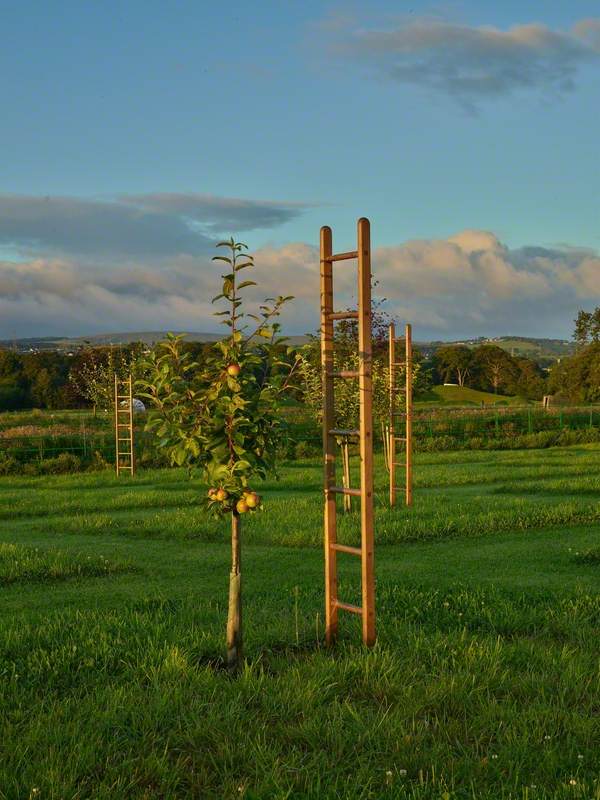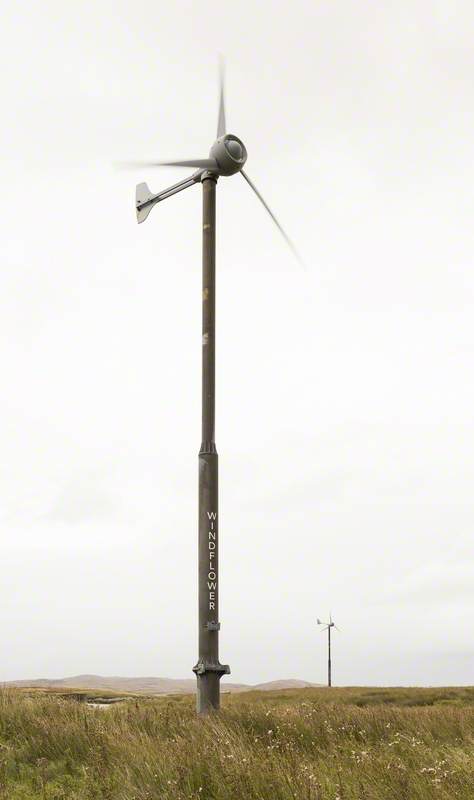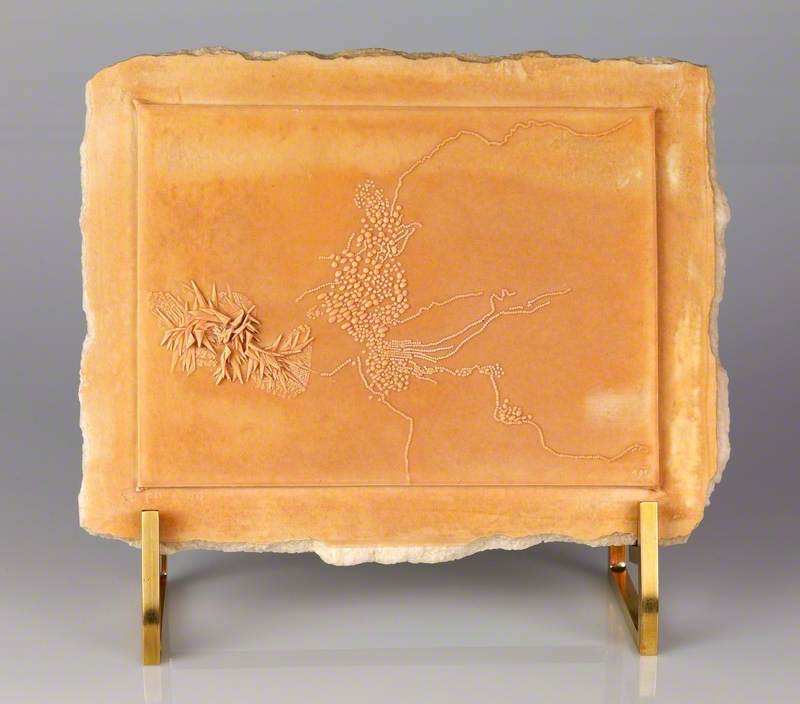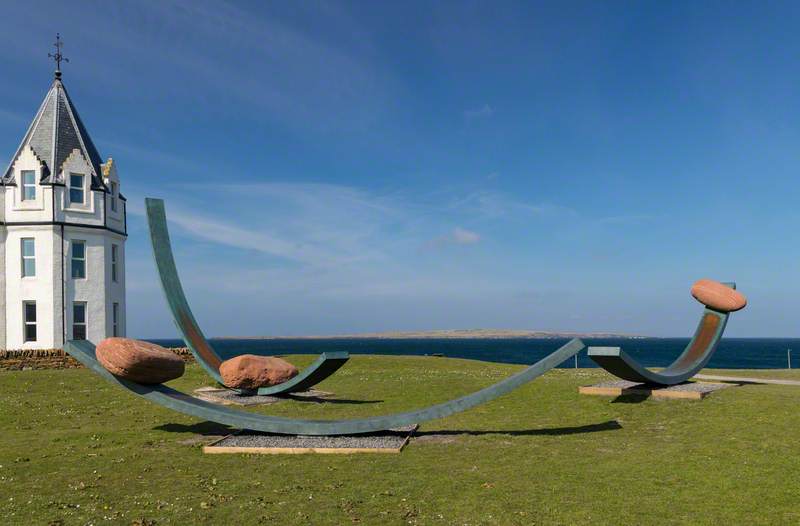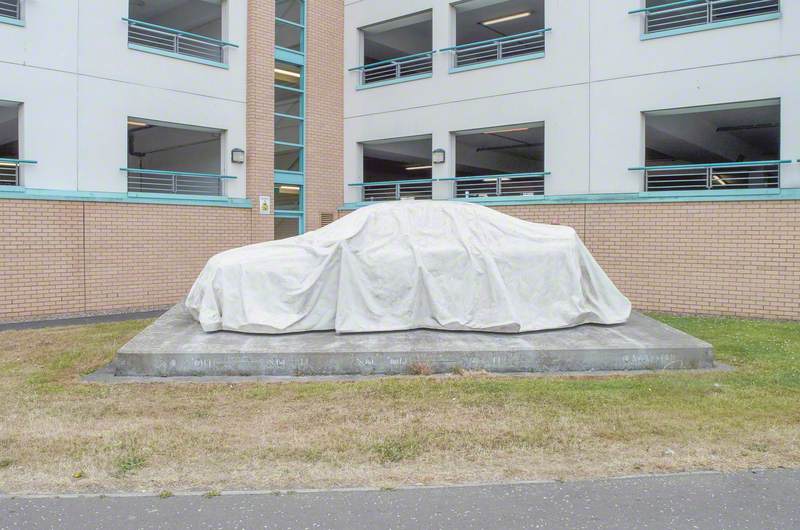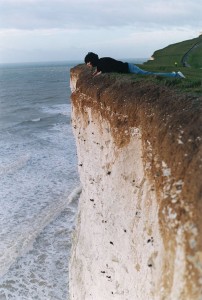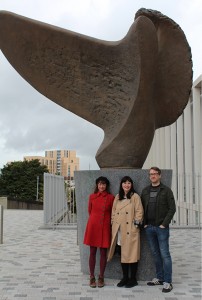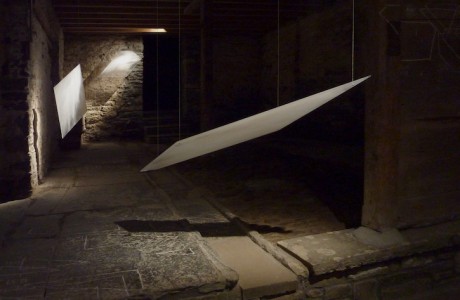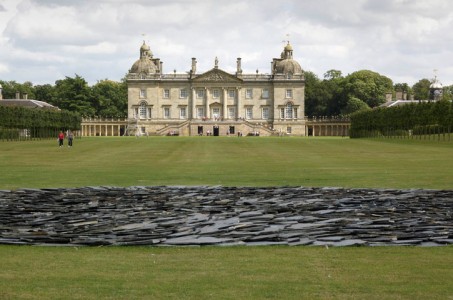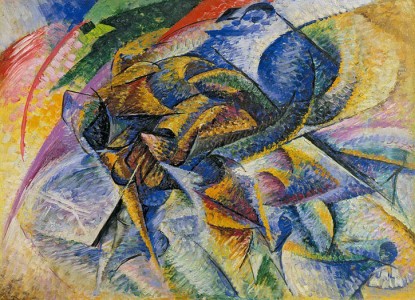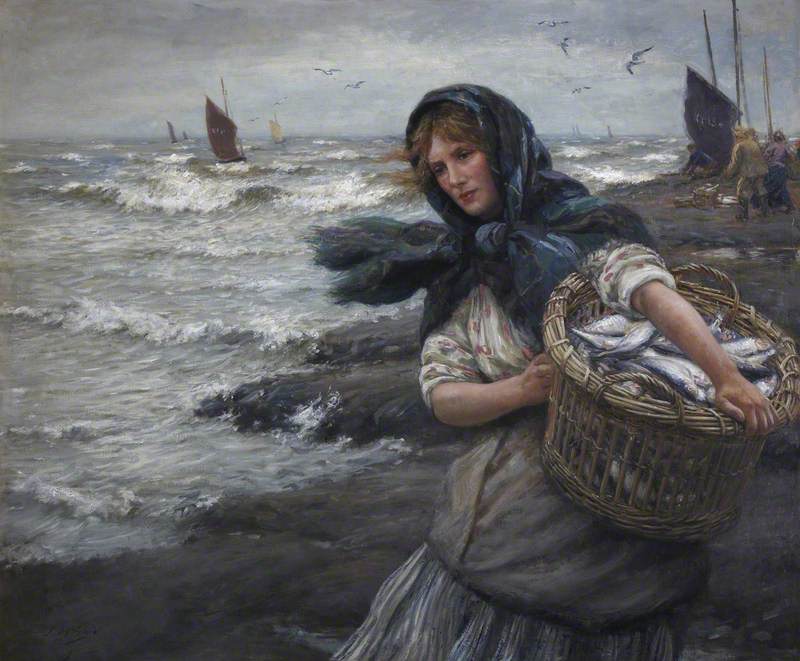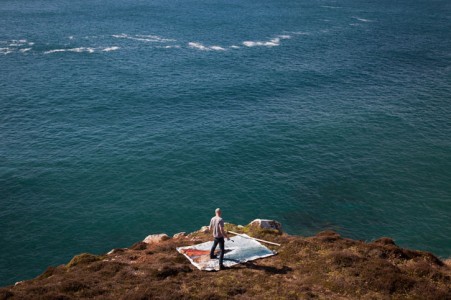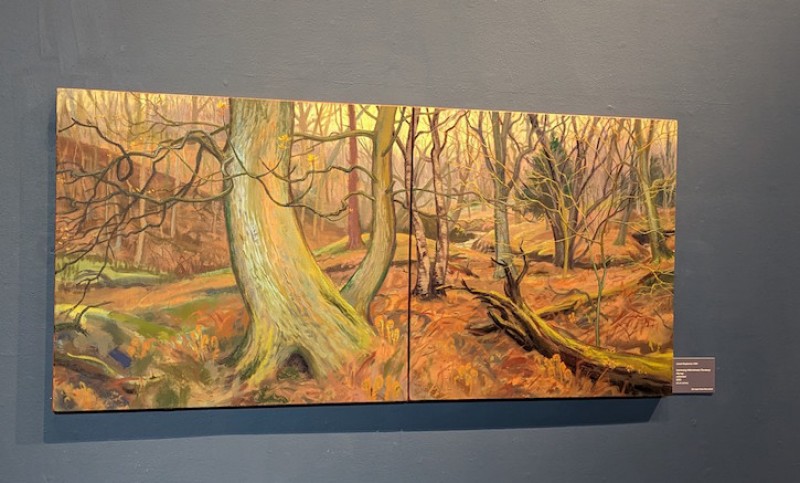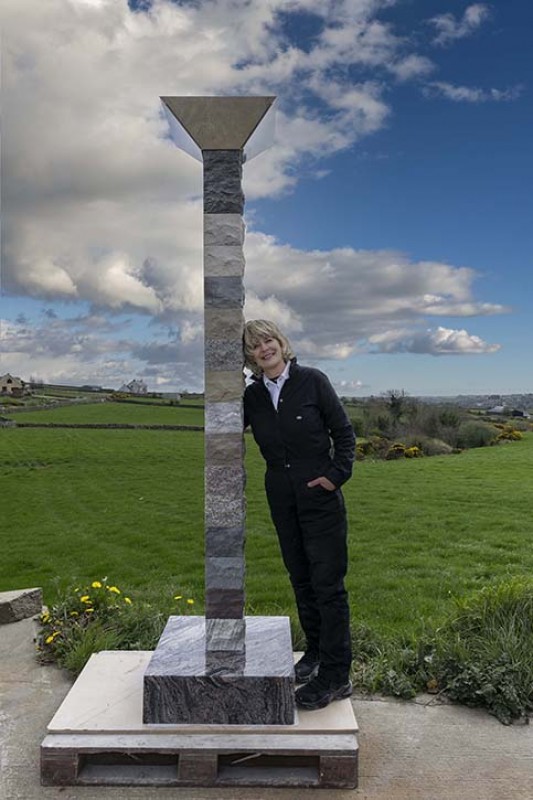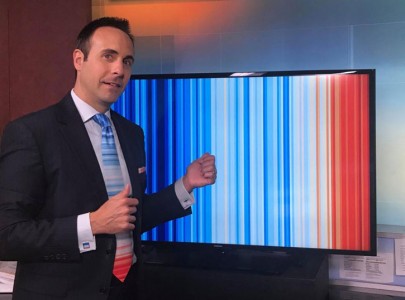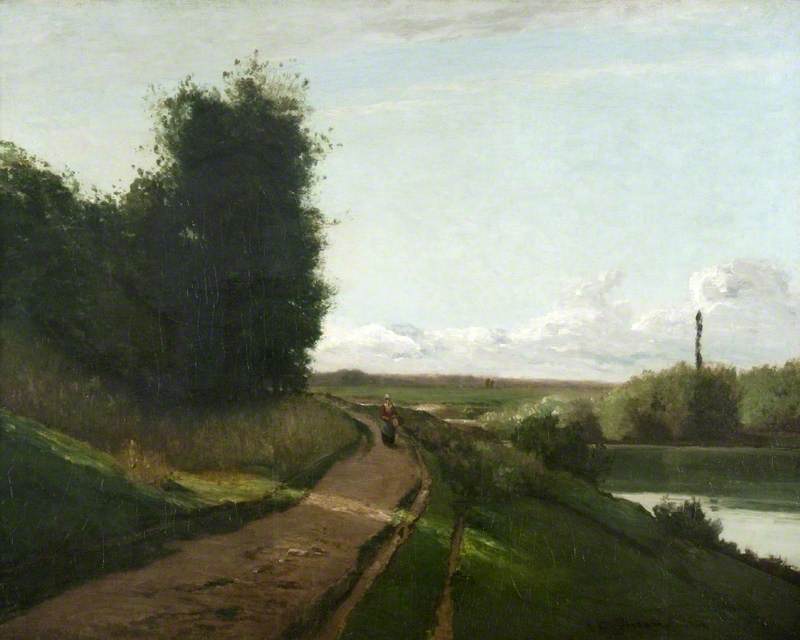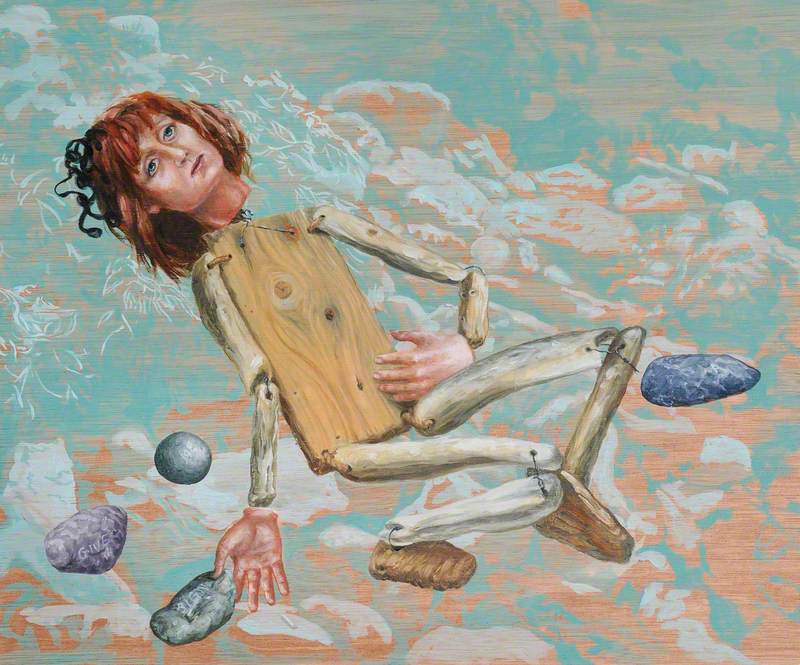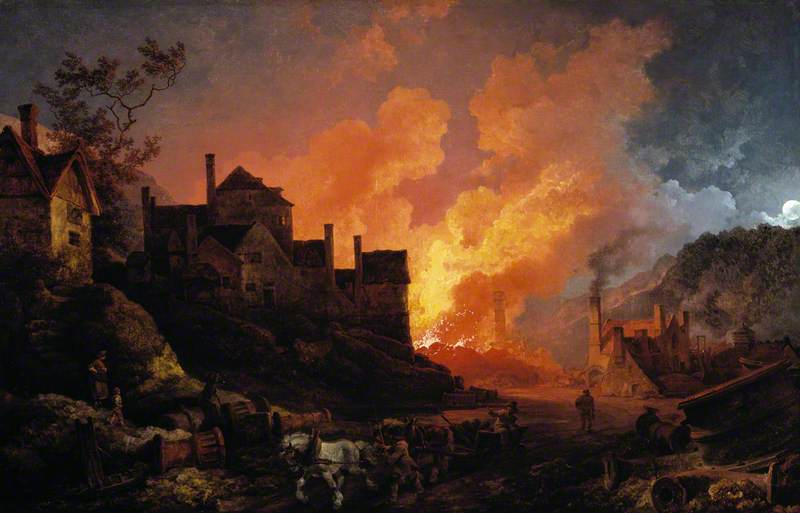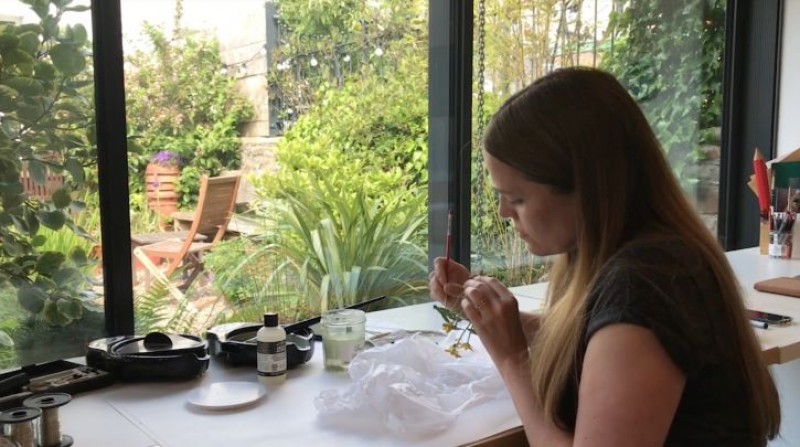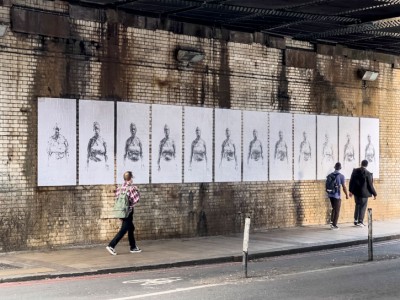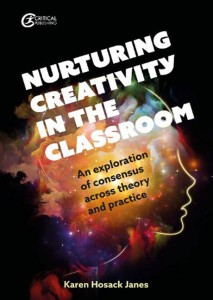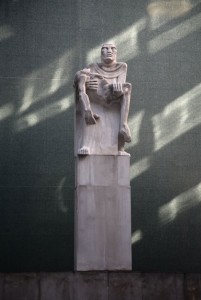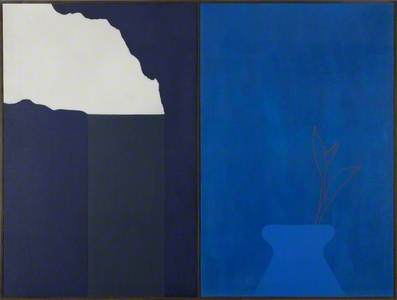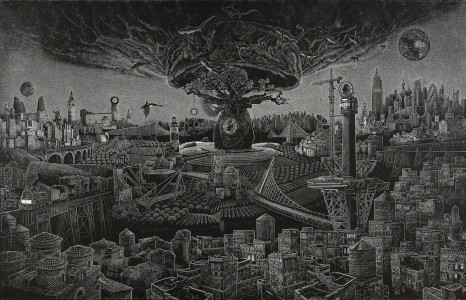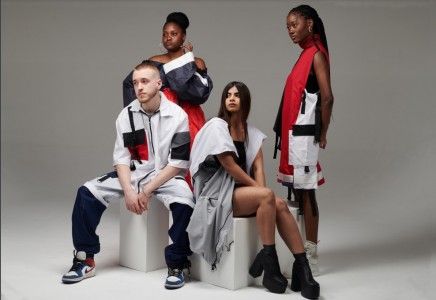This November, the eyes of the world are on Glasgow as the city hosts the United Nations Climate Change Conference. Better known as COP26, the annual conference is an opportunity for global leaders to thrash out commitments to reduce carbon emissions and – hopefully – help humanity avert the worst effects of the climate crisis.
But climate action does not stop at the doors of the Scottish Event Campus (SEC), nor is it the remit of policymakers alone. If we are to meet these challenges, an active and engaged public is essential. In this regard, the arts play a vital role: not just in raising awareness of the issue, but in helping audiences develop a meaningful connection to climate change.
Feel Field: Artist Residency at the Climate Portal
A converted shipping container transformed into a space of reflection by Paria Moazemi Goodarzi and Francisco Llinas-Casas 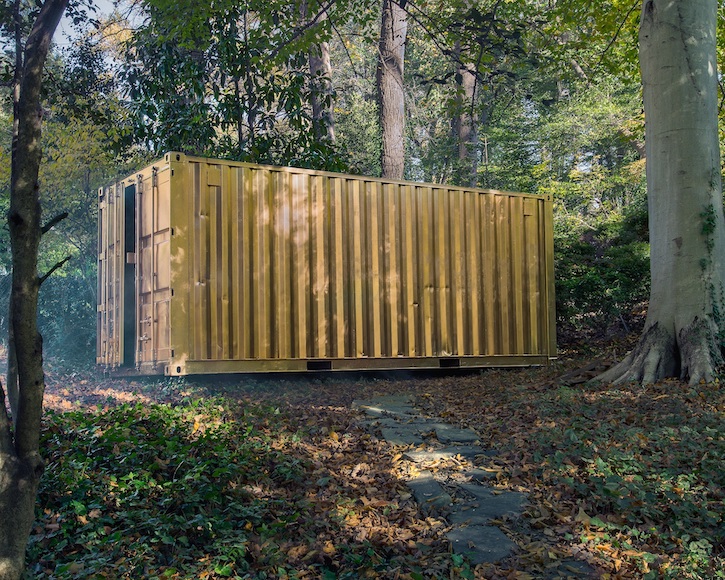
In the lead-up to COP26, the University of Glasgow's College of Arts Sustainability Working Group launched The Dear Green Bothy, a free public showcase of projects and research in the arts and humanities that address the climate emergency.
These include Feel Field: Artist Residency at the Climate Portal, a gold shipping container that has been converted into a space for reflection by artists Paria Moazemi Goodarzi and Francisco Llinas-Casas, and installed at the Royal Conservatoire of Scotland. The work is also part of the Being Human Festival 2021.
'The Dear Green Bothy creates a space for the practical application of skills and attitudes that are too often left out of the equation when it comes to understanding and addressing climate change – or seen simply as tools to make scientific research more accessible,' says Casi Dylan, The Dear Green Bothy's Project Manager.
Sighthill Stone Circle
photograph by Kenny Brophy. Part of the exhibition 'From Cooling Towers to Stone Circles: the heritage of Sighthill', The Dear Green Bothy 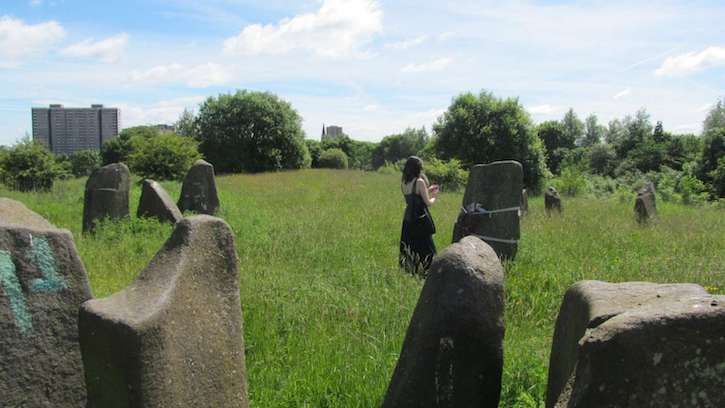
The Dear Green Bothy programme is wide-ranging, eclectic and diverse, spanning talks on global environmental history and the environmental costs of gaming, to creative works that explore the enormity of the crisis on our hands.
'The arts also play an important role in helping us imagine alternative ways of being, and what could be possible in a better, healthier and more sustainable world?', asks Dr Minty Donald, a Professor of Contemporary Performance Practice at the university. 'Dear Green Bothy projects have explored ideas like: how might we re-imagine cities if we considered them from the deep-time perspective of geology? What alternative worlds are evoked in fantasy and science fiction writing? Should rivers have freedom?'
Stones from the bed of the Kelvin
'Queer River' by James Aldridge 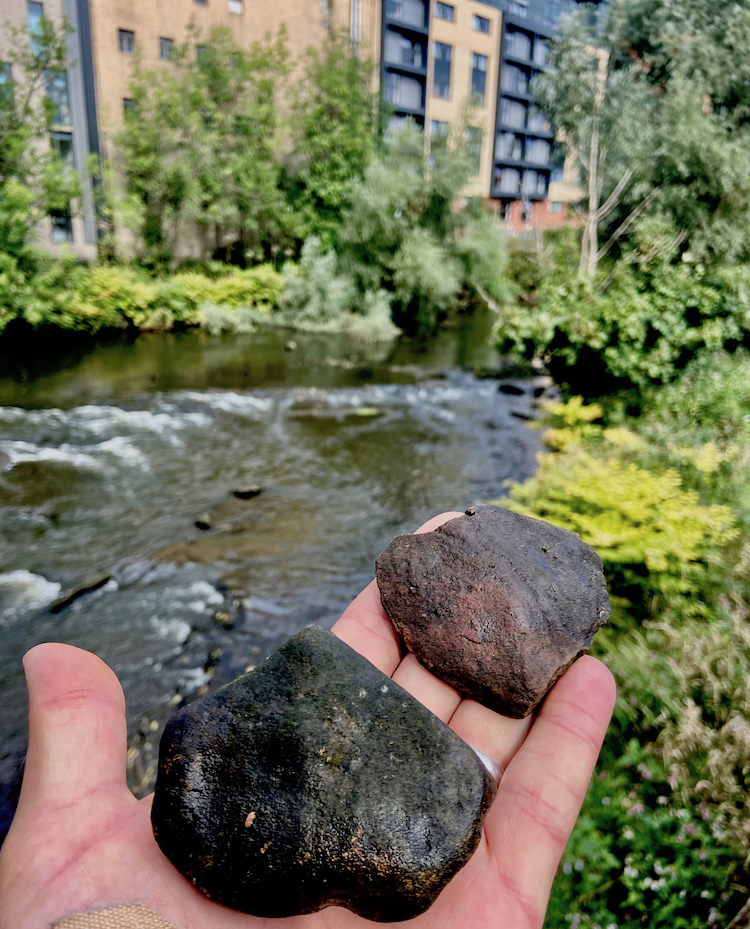
On the subject of rivers, Donald cites Queer River, a project with artist James Aldridge. As part of The Dear Green Bothy programme, Aldridge led a small group of people for a walk along the river, whilst sharing their thoughts and experiences of the Clyde.
Inspired by this event, Queer River will delve into important questions around Glasgow's relationship with its major river, as well as the flood risk this area now faces as a consequence of climate change and sea-level rise.
Calling for Rain
2021, film still by Khvay Samnang 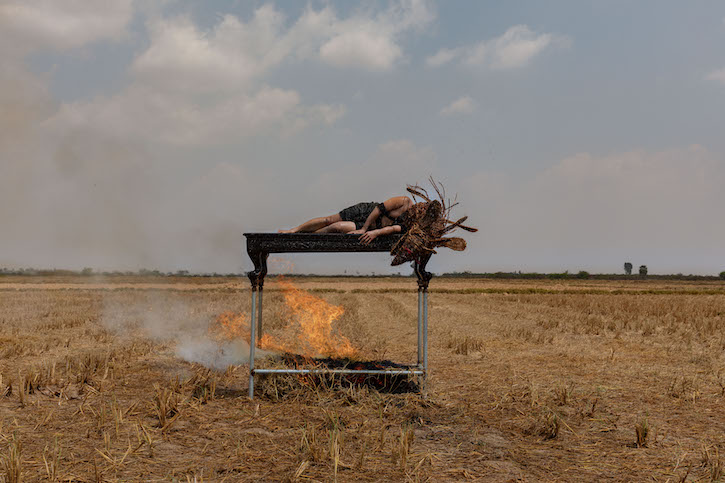
Elsewhere in the city as part of COP26, Khvay Samnang, a Cambodian artist based in Phnom Penh, will present new work at Tramway. His exhibition includes a new film, Calling for Rain, commissioned by the Children's Biennale National Gallery of Singapore.
Visitors will also be able to experience the work as an installation where it will appear to rain inside the gallery.
Calling for Rain
2021, film still by Khvay Samnang 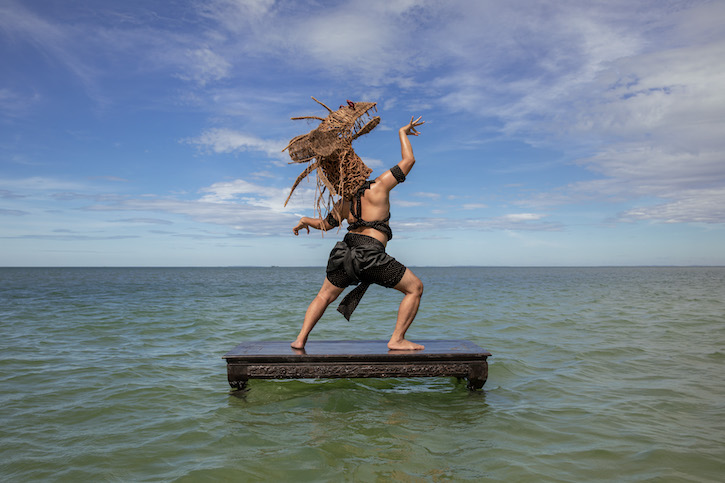
The approach of connecting the climate emergency's global scale to local impacts is at the heart of Creative Carbon Scotland's initiative Climate Beacons for COP26, which has established seven creative hubs across Scotland.
Led by artistic and cultural organisations from that community, these Beacons will host programmes with the aim of engaging local residents in issues around climate change. Organisations include Lyth Arts Centre, Beacon Arts Centre, National Mining Museum Scotland and The James Hutton Institute.
This regional approach was specifically designed to ensure that communities outside Glasgow would also have an opportunity to engage with the themes around COP; particularly those which are often sidelined in conversations around sustainability.
An Lanntair staff at the Callanish Stones as part of their Travel Plan project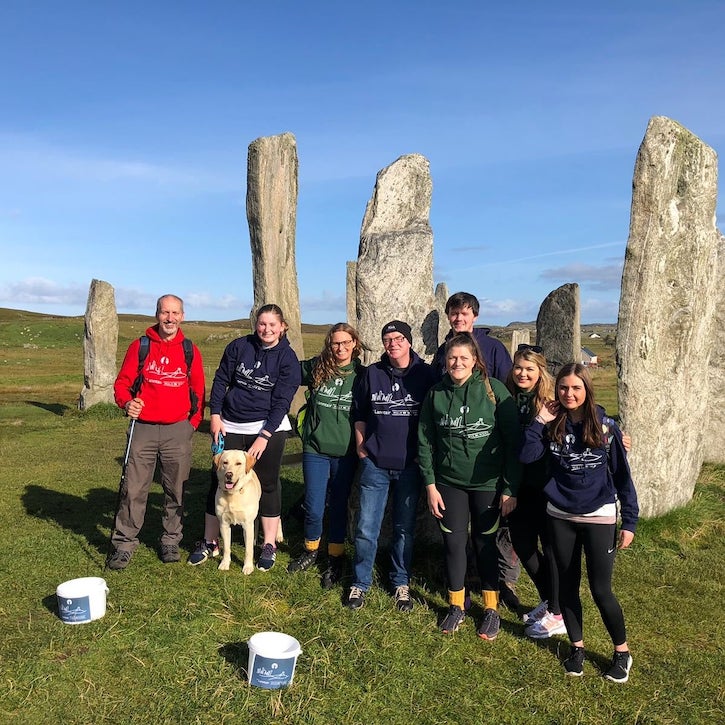
Community involvement is particularly central to the Outer Hebrides Climate Beacon. As island communities, the Hebrides are extremely vulnerable to dramatic weather changes and sea-level rise as a result of climate change.
In response to these threats, the Outer Hebrides Community Planning Partnership had set up a Climate Change Working Group to create a climate adaptation plan for the islands.
The eight organisations involved in the Outer Hebrides Beacon, which include An Lanntair in Lewis and Taigh Chearsabhagh in North Uist, saw the project as a way of engaging the community in the adaptation plan, giving them a voice in what the islands' future will look like.
Both organisations have previously worked with artists on projects focusing on climate change, such as Taigh Chearsabhagh's 2019 commissioned interactive light installation Lines (57° 59'N, 7° 16'W) by Timo Aho and Pekka Niittyvirta, which uses sensors to interact with rising tides.
Lines (57° 59’N, 7° 16’W)
2018
Pekka Niittyvirta (b.1974) and Timo Aho (b.1980) 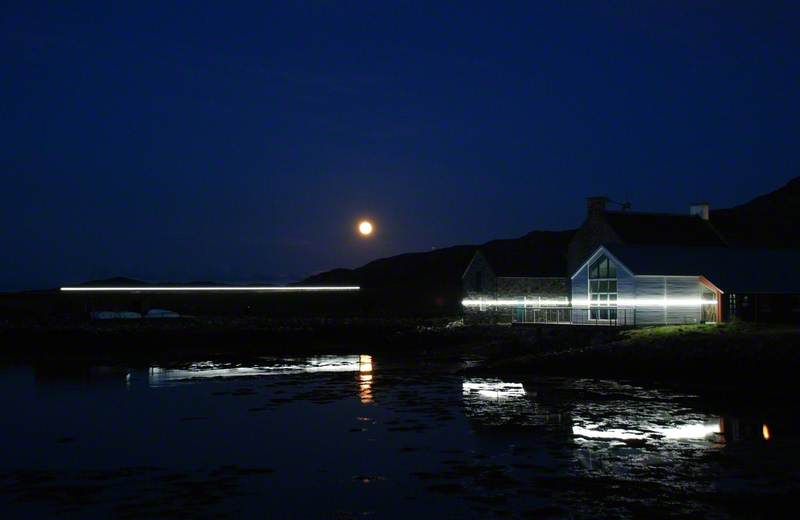
'We now have a dynamic partnership working across sectors, bringing together the local community with artists and climate change experts,' says Alicia Matthews, the Project Co-ordinator of the Outer Hebrides Climate Beacon.
The first exhibition to take place as part of the Outer Hebrides Beacon will be An Lanntair's staging of Robbie Thomson's multimedia installation End Of Engines, which explores our current environmental condition through the metaphor of the combustion engine.
Primordial Noon / End of Engines
2021, multimedia installation by Robbie Thomson 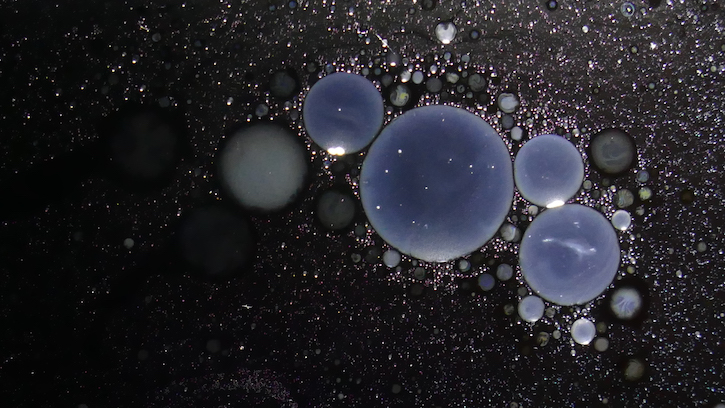
The Beacon will also be delivering two artist commissions: one to focus on Gàidhlig communities, climate justice and the spiritual importance of place in Harris or Lewis.
The other, based in Uist, will see the chosen artist experiment with waste products in collaboration with local communities, in the hopes of reviving the islands' historic 'make do and mend' culture.
A map produced at a workshop in North Uist as part of the Outer Hebrides Climate Beacon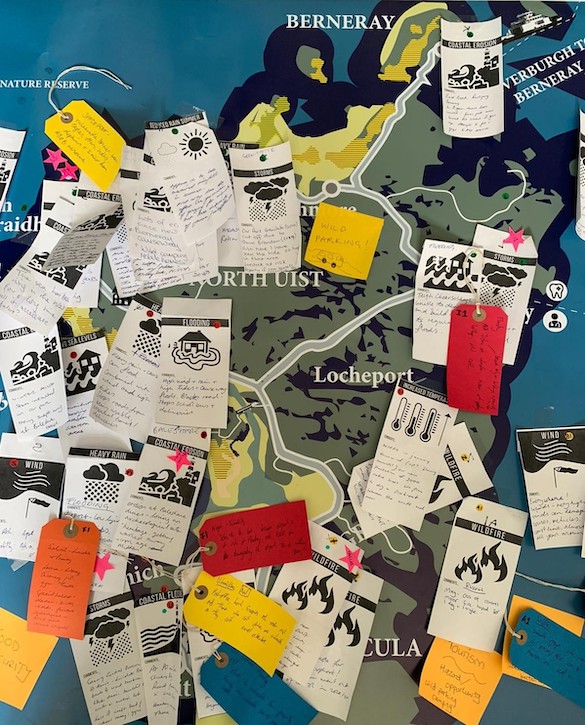
'[The Beacon] feels like just the beginning of something that will continue to evolve and grow,' says Matthews.
But the effect that it's had amongst residents is already palpable: 'Community members hold vast knowledge around climate change, and were enthusiastic about the chance to share it in a hands-on and creative way,' she says.
'The platform and space that our Beacon has provided has allowed locals to share their intimate knowledge of the changing land, and has strengthened community resolve to act.'
Though COP has been a major galvanising force, organisers on the ground in Scotland are already looking beyond the conference. When asked about The Dear Green Bothy's impact upon climate discourse in Scotland, Dylan replies: 'We do know for sure that COP26 is far from the be-all-and-end-all; it marks more of a beginning than an end.'
Artists and climate change
Alec Finlay
Alec Finlay's creative practice explores how humankind relates to landscapes and ecologies. Gathering (2015–2018) presents an alternative mapping of the Highlands made up of poems, photographs, maps and essays, which explores different human perspectives on the vulnerable landscape, as well as highlighting the various folk names of the region. 'With these local names as a guide, one becomes aware of a wonderful range of locations that have been overlooked,' writes Finlay.
This 'place awareness', as he calls it, bestows upon viewers a heightened insight into the land around them, and is a notion he returns to again in his work Blàthan Briste | Broken Flowers. Here, his interest in renewable energy sees him explore the relationship between island cultures and their place names as 'prophetic markers of tides and marine energy technologies'.
Ilana Halperin
A Geological Meeting Between I. H. and H. I. (An Archaeology of Barts)
2010
Ilana Halperin (b.1973) 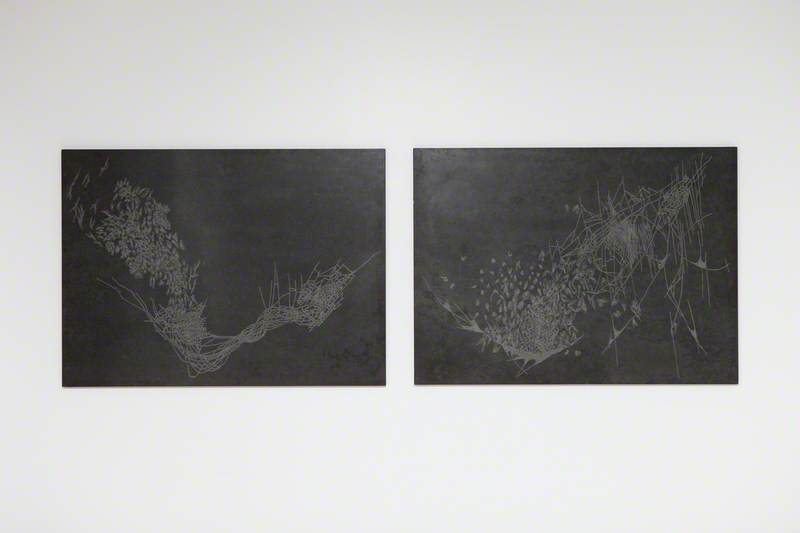
As Ilana Halperin understands it, geology is 'a language to understand our relationship to a constantly evolving world'. Much of her work involves the intertwining of personal and geological time, such as in her work Physical Geology (Cave Cast / Slow Time).
Created from rubber molds left in the Fontaines Pétrifiantes de Saint Nectaire caves in France – which in one year forms limestone stalactites that take a century in normal conditions – Physical Geology combines modern technology and ageless geological processes to suggest how 'we are part of a very, very long, deep-time story'.
Dalziel + Scullion
Matthew Dalziel and Louise Scullion have been creating art together under the moniker Dalziel + Scullion since 1993. Their works often document or encourage different perspectives upon our surrounding environment.
Located in Dundee city centre, Catalyst is symbolic of our changing views around vehicular transportation in light of our growing awareness of their environmental impact. At the same time, the catalytic cement it's made from absorbs harmful airborne pollutants, transforming them into harmless nitrate.
Deborah Chu, writer and arts journalist
This content was supported by Creative Scotland
